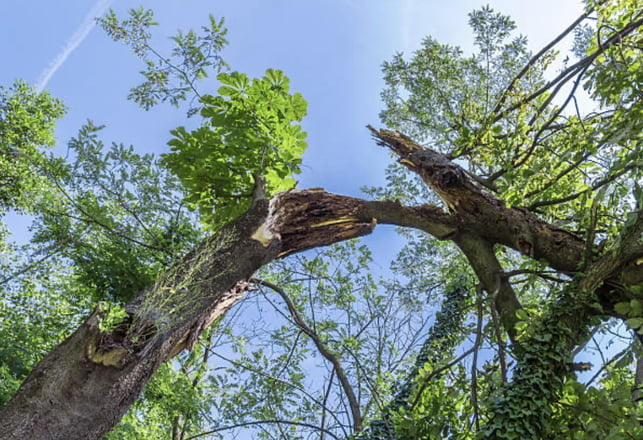INTRODUCTION
Trees add beauty and value to your property, but sometimes, removal is the best course of action. Whether due to disease, storm damage, or structural risks, knowing when to remove a tree can prevent costly repairs and safety hazards. Homeowners in Flint, Grand Blanc, and Fenton—as well as property owners in Davison and Swartz Creek—should watch for these warning signs that indicate it’s time for professional tree removal.
1. DISEASED OR DYING TREE
If a tree shows signs of disease, such as discolored leaves, fungus growth, or brittle branches, it may be beyond saving. Diseased trees can spread infections to nearby plants, making early removal essential. Areas like Linden and Holly, where trees are abundant, should take special care in monitoring tree health.
2. EXTENSIVE STORM DAMAGE
Severe weather can weaken trees, making them a safety risk. If a tree has large broken branches, a split trunk, or has been partially uprooted, removal may be necessary to prevent it from falling unexpectedly. Communities in Burton and Clio often experience strong storms, making tree inspections critical.
3. TREE IS LEANING DANGEROUSLY
A tree that leans suddenly or at a sharp angle can be a sign of root failure or internal decay. A professional arborist should assess the tree’s stability to determine if removal is the safest option, especially in high-wind areas like Montrose and Goodrich.
4. ROOT DAMAGE
Tree roots that are visibly damaged, decayed, or causing structural issues can compromise the tree’s stability. Cracked sidewalks, lifted driveways, and foundation damage are signs that a tree’s roots are becoming a problem. Homeowners in Swartz Creek and Flushing should monitor root growth near their homes.
5. HOLLOW OR DECAYING TRUNK
A hollow or rotting trunk indicates significant internal decay, which weakens the tree’s structural integrity. Even if a tree appears healthy on the outside, internal decay can make it a hazard. Residents in Davison and Thetford Township should schedule inspections for older trees.
6. EXCESSIVE BRANCH LOSS
If a tree consistently loses large branches, it may be struggling with internal issues. Falling branches can be dangerous for people, vehicles, and property, especially in high-traffic areas like downtown Flint and suburban neighborhoods in Grand Blanc.
7. INFESTATION OF PESTS
A tree that attracts excessive pests, such as termites or carpenter ants, can become structurally weak over time. Infested trees are often beyond saving and should be removed to prevent pests from spreading to nearby structures. This is especially crucial in areas like Gaines and Argentine Township.
8. OBSTRUCTING POWER LINES OR STRUCTURES
Trees growing too close to power lines, houses, or other structures can pose serious risks. If trimming is no longer a viable option, complete removal may be the safest solution. Homes in Grand Blanc and Flint Township should regularly inspect trees near power lines.
9. BLOCKING SUNLIGHT OR SPACE
Overgrown trees can prevent sunlight from reaching your lawn or garden, leading to patchy grass and unhealthy landscaping. Removing a tree can help improve air circulation and light exposure, benefiting properties in Linden and Holly.
10. TREE HAS OUTGROWN ITS SPACE
If a tree has grown too large for its location, its roots may interfere with sidewalks, driveways, or even your home’s foundation. In densely wooded areas like Montrose and Thetford Township, managing tree growth is essential for property safety.
CONCLUSION
Knowing when to remove a tree can prevent hazards, protect your property, and improve your landscape. If you suspect a tree on your property is a risk, consult a professional tree removal service. Serving Flint, Grand Blanc, and the surrounding Genesee County areas, our team is here to help keep your home and property safe. Contact us today for a tree assessment!

